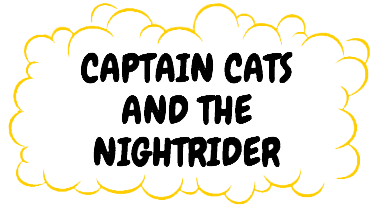Death! Ahem, Nightrider here.
In this edition of Underground, we’ll take a look at the album “…For The Whole World To See” by the band Death.
Death is a rock band that formed in 1971 by siblings Bobby (vocals, bass), Dannis (drums) and David (guitar) Hackney. Inspired by Alice Cooper and The Who, Death abandoned funk and went towards rock; David encouraged his brothers to focus on a different type of hard rock, resulting into music that formed into what we call today as punk. I found out about Death through the awesome documentary “A Band Called Death,” where I witnessed their rise, breakup, David’s death in 2000, and their rise again where they were acknowledged as quite possibly THE first punk rock group. Their music existed two years before the rise of The Ramones in 1977.
As for their first album, “…For The Whole World To See” was released for the first time in 2009. Even though the album has seven songs and lasts under thirty minutes, I enjoyed the fun lyrics, speed, and its freshness. Death was so ahead of its time that their music trumps most of today’s rock groups.
Let’s take an in-depth look at “…For The Whole World To See:”
The first song, entitled “Keep on Knockin’,” came about during a jam session in David’s bedroom. A group of girls heard this from outside their house and wanted to go inside and see Death perform, knocking on the bedroom door; the neighbors angrily knock on the door as well until police arrived to shut them down. The song’s lyrics were made on the spot, hence the title.
Next comes “Rock-N-Roll Victim.” The message of “Rock-N-Roll Victim” is that of the band speaking to their fans on a personal level. Having fun with rock-n-roll, listening to rock-n-roll in the “solace” of your parent’s home and the music establishment “glorifies” rock-n-roll in the effort to make money at the expense of the bands. This isn’t a new issue, but it foreshadows the music industry’s standard practices that remain to this day.
“Let The World Turn” contrasts between optimism for a better tomorrow and not being tied down by the establishment. A funk bridge follows the slow start before a furious chorus overtakes the song; this pattern briefly repeats itself.
Next comes “You’re a Prisoner.” A chaotic song about living life as a prisoner, whether you have committed a crime, finding no way out of a perpetual funk, or you are a prisoner of yourself due to your inability to move anywhere.
“Freaking Out” is an instant classic that, to me, shows that Death is possibly the fathers of what is now called punk rock. Fast, furious and way ahead of its time, “Freaking Out” is a song about someone who is having a meltdown. This is the kind of song that sticks to your head after hearing it for the first time, especially the first word of the song: Death!
“Where Do We Go From Here?” is one of those songs that makes one question progress. Dreams can furiously be replaced with unforgiving reality while posers and opportunists get called out for revealing their self-interests instead of providing something useful to the world. The last verse reveals a somewhat hopeful solution to finding dreams and then making your reality from them, but then again, what directions will you go to take that route?
Finally, the album concludes with a swift but serious melody called “Politicians in My Eyes.” A direct response to the era of Nixon, Bobby Hackney describes America’s rotting politics of the time and laments the public’s impotence of solving the problems of political corruption, ineptitude, and stagnation without naming the ones responsible. If this song came out today, it would be a monster hit with lyrics that remain relatable to this day; a timeless classic on intelligent lyricism while delivering a fast-paced warning to the masses about not getting out and voting responsibly.
Death’s “…For The Whole World To See” shows proof that music gold does come from anywhere and that they are fresh today as they were back in 1974. The album itself is a masterpiece that no one has heard until the release of the documentary “A Band Called Death” in 2009. I highly suggest seeing the documentary and then buying this solid album; you won’t be disappointed.

Recent Comments